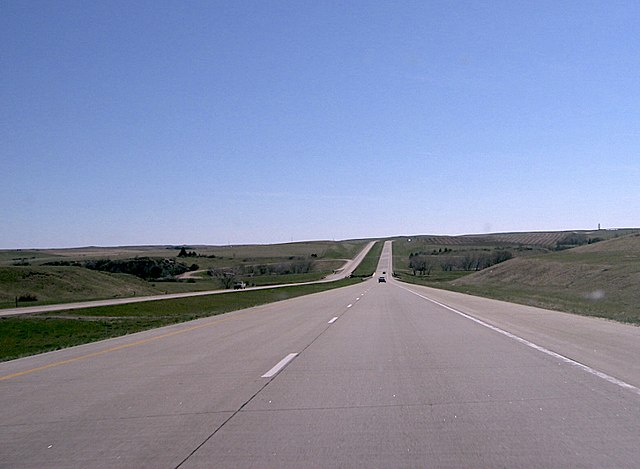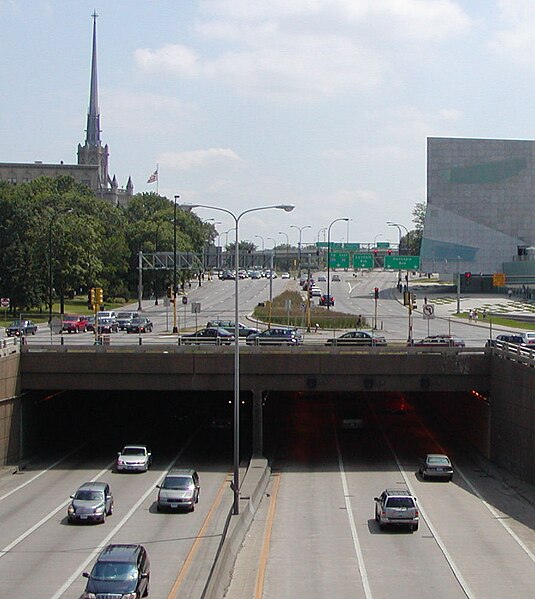Interstate 94 (I-94) is an east–west Interstate Highway connecting the Great Lakes and northern Great Plains regions of the United States. Its western terminus is just east of Billings, Montana, at a junction with I-90; its eastern terminus is in Port Huron, Michigan, where it meets with I-69 and crosses the Blue Water Bridge into Sarnia, Ontario, Canada, where the route becomes Ontario Highway 402. It thus lies along the primary overland route from Seattle to Toronto and is the only east–west Interstate Highway to have a direct connection to Canada.
Billings, Montana, the western terminus of I-94
Eastbound on I-94, the main highway east–west through North Dakota
Lowry Hill Tunnel in Minneapolis, Minnesota
I-894 west at the Zoo Interchange (I-94) in 2008
Interstate Highway System
The Dwight D. Eisenhower National System of Interstate and Defense Highways, commonly known as the Interstate Highway System, or the Eisenhower Interstate System, is a network of controlled-access highways that forms part of the National Highway System in the United States. The system extends throughout the contiguous United States and has routes in Hawaii, Alaska, and Puerto Rico.
I‑55 under construction in Mississippi in May 1972
Commemorative sign introduced in 1993. The system was established during Dwight D. Eisenhower's presidency, and the five stars commemorate his rank as General of the Army during World War II.
The fervor of urban renewal led to the routing of Interstate 81 through the middle of Syracuse's 15th Ward in the 1960s. The viaduct is now slated for demolition.
I-95 in Columbia, Maryland, built to modern standards.








